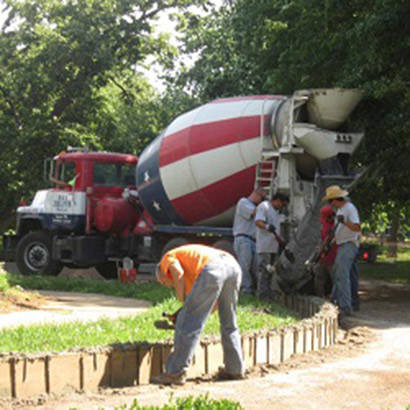
Situated within the middle of a beautiful historic neighborhood, Lafayette Park is considered the oldest park in St. Louis, Missouri, as well as the oldest urban park west of the Mississippi. The well-used, 30-acre park has walking paths, gardens, a lake, a boathouse, a landscaped grotto, a playground, and Victorian-era buildings. “It’s always full of kids, families, and people with their dogs,” says Alicia Stellhorn, leisure program manager for playtime recreation at the Department of Parks, Recreation and Forestry in St. Louis, Missouri.
In addition, those local residents care deeply about maintaining the 150-year-old park. “There’s a really strong volunteer presence in the neighborhood,” Stellhorn says.
Many of those local volunteers support the Lafayette Park Conservancy, which works independently to raise money for park improvements.
In the park’s master plan, the Conservancy had decided to replace the asphalt trailways, which had cracked and worn over time. The Great American Trails grant — combined with a matching grant from a city alderwomen — allowed the park system to replace about a quarter of the park’s trails.
The half-mile of new concrete trails follow roughly the same footprint as the old trails, though some were slightly redesigned to help highlight certain park features, including a statue of George Washington. Plants — including flowers and groundcover planted by neighborhood volunteers — now flank the trails and surround statues.
For the project’s final touches, six LongHorn Steakhouse volunteers donned gardening gloves to help out on a work day organized by the Lafayette Park Conservancy. LongHorn volunteers weeded, planted, and mulched in five gardens around the statues.
Now, local residents and visitors alike enjoy level walking paths for their park strolls. “The trails are much nicer and smoother to walk on,” Stellhorn says.
Without the financial assistance from the grant, this project may have only been possible in about a decade, Stellhorn explains. “The Conservancy holds movie nights and different events to raise money, but it would have taken a long time to raise that amount of money.”
Stellhorn has found that city aldermen and alderwomen have been generous with matching grants to help park restoration causes. “These grants have been extremely helpful in that we’ve been able to take the grant dollars and stretch them even further,” says Stellhorn, who advises that parks considering a similar grant have a master plan already in place. “We have 115 city parks, and each one has a master plan of how to improve.”
